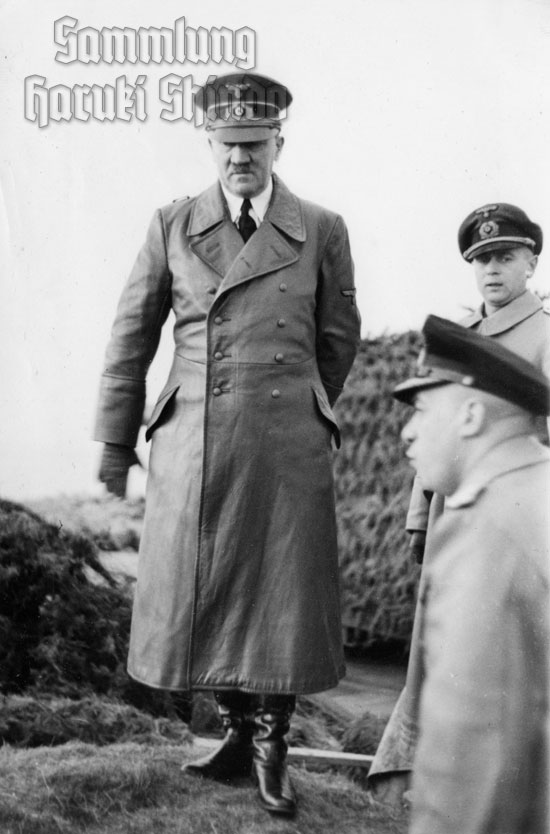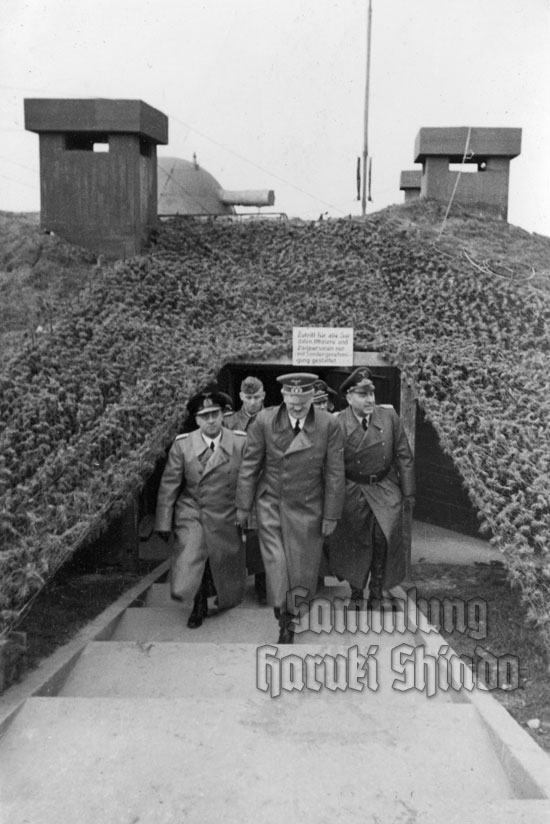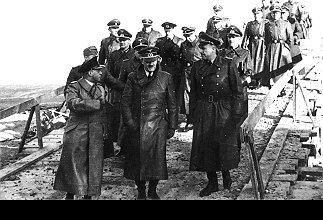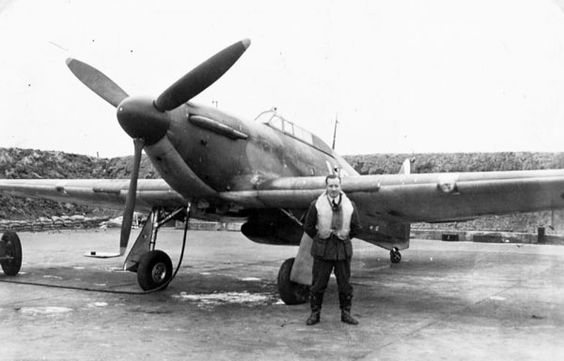Monday 23 December 1940
Mussolini has been despondent ever since the Italian offensive in Albania failed in early November, and recent events only have made it worse. During a private discussion with Count Ciano, his brother-in-law and Foreign Minister, Mussolini moans:
I must nevertheless recognise that the Italians of 1914 were better than these. It is not very flattering for the regime, but that’s the way it is.Of course, "the Italians of 1914" were on the British side, not the German, a point which Winston Churchill makes during his evening broadcast (see below).
European Air Operations: German propagandist Lord Haw-Haw brazenly reveals the Luftwaffe's plans to bomb Manchester for the second night in a row, and then the attack takes place as he describes. Throughout the night, 171 German bombers drop 195 more tons of high explosives and 893 incendiary bombs on the city. Overall, through the two nights, there are 363 dead and 1183 other major casualties.
RAF Bomber Command attacks Boulogne, Dunkirk, and Ostend. It also hits Ludwigshafen in the Rhineland.
 |
| Hitler during his inspection tour, 23 December 1940 (Leitstand of the Marine-Küstenbatterie "Großer Kurfürst" in Cap Gris Nez). |
The Luftwaffe (either Heinkel He 111s or Focke-Wulf Fw 200 of I,/KG 40, sources vary) bombs and badly damages 6941-ton Dutch freighter Breda off Oban in Loch Etive. The Breda is taken in tow and beached, but ultimately is written off. Everyone survives.
During the attack near Oban, the Luftwaffe also damaged 2022-ton British freighter Flynderborg, 88-ton drifter Lupina and 4652-ton Dutch freighter Tuva.
The Luftwaffe (IX Air Corps) also drops an aerial mine on and sinks 400-ton Dutch trawler Ystroom in Liverpool Bay near Southport, Lancashire. Everyone survives
The Luftwaffe attacks on Manchester damage 6734-ton British freighter Pacific Pioneer.
The Luftwaffe also damaged 314-ton British freighter Iwate.
Royal Navy destroyer HMS Warwick hits a mine off Liverpool (near the Bar Lightship) and has to be towed to shore, where it is beached prior to repair. The damage is severe and repairs will take well over a year.
Royal Navy anti-aircraft ship HMS Alynbank hits another ship (not identified) in the night and is damaged. It proceeds to Rosyth for repairs.
Royal Navy destroyer HMS Havock collides with battleship HMS Valiant and is put out of action for two months.
Royal Navy minelaying cruiser HMS Adventure lays minefield ZME 9 in the North Sea.
Convoy OB 263 departs from Liverpool, Convoy FN 366 departs from Southend, Convoy SC 17 departs from Halifax.
U-553 (Kapitänleutnant Karl Thurmann) is commissioned, U-558 launched.
Royal Navy corvette HMS Aubretia (K 96) and anti-submarine warfare trawler HMT Hamlet (T 167) are commissioned).
US submarine USS Grampus is launched.
Italian destroyer Fratelli Cairoli hits one of the mines laid by HMS Rorqual off Tripoli on 5 November and sinks near Misrata, Libya.
German/Vichy French Relations: Jacques Bonsergent, a 28-year-old civil engineer, was one of the protestors against German rule on 10 November 1940 (they were laying wreaths on the Tomb of the Unknown Soldier). Arrested (along with 122 others), Bonsergent was convicted on 5 December by a German military tribunal of violating the occupation rules by fighting with a Wehrmacht sergeant. In fact, Bonsergent was only visiting Paris and had no interest in the protest, but got caught up in the melee.
Today, the Germans execute Bonsergent. Jacques Bonsergent is believed to be the first Frenchman executed by the Germans under the occupation. He is buried at Malestroit, Brittany, and a station of the Paris Métro on line 5, which has its entrance on Place Jacques Bonsergent, is named after him.
It is all one man – one man, who, against the crown and royal family of Italy, against the Pope and all the authority of the Vatican and of the Roman Catholic Church, against the wishes of the Italian people who had no lust for this war; one man has arrayed the trustees and inheritors of ancient Rome upon the side of the ferocious pagan barbarians.Italians are forbidden from listening to any BBC broadcasts, so few are likely to hear it - or at least admit to hearing it. However, people all across Occupied Europe surreptitiously listen to the BBC despite the regulations, and this is a clever way for Churchill to reach them and demoralize them, too.
US/Sino Relations: Claire Chennault's talks with President Roosevelt bear fruit when the US government agrees to provide the American Volunteer Group with 100 P-40B Tomahawk fighters - which are America's front-line fighters. This will enable Chennault to begin battling the Japanese over China with American pilots. Everything, however, is strictly unofficial - there is no direct government involvement, and Chennault's AVG is to be managed by a private company.
 |
| Hitler during his inspection tour in France, 23 December 1940. He is at the Leitstand of the Marine-Küstenbatterie "Großer Kurfürst" in Cap Gris Nez. |
With the 1940 Olympics canceled and no real need for long-range transport, the Me 261 is a plane without a purpose - but it is an advanced design, so the design and manufacturing process continues. It does not hurt its state backing that the Me 261 has acquired the nickname "Adolfine" in honor of the Fuhrer, who likes the long-range concept. The test flight goes well, and development continues.
Soviet Military: The Red Army begins a conference at the Kremlin. Attending are all the top Generals, including Meretskov, Zhukov, Timoshenko, Voroshilov, and Pavlov.
US Military: The Army absorbs the National Guard's 35th Division. This division is populated by men from Arkansas, Kansas, Missouri, and Nebraska.
The US Navy establishes NAS Key West.
Japanese Military: The Japanese navy determines that aircraft carrier Hōshō, the world's first commissioned ship designed from the keel up to be an aircraft carrier, was obsolete. The ship is found to be too small to carry the Mitsubishi A6M Zero, the Aichi D3A "Val", and/or the Nakajima B5N "Kate" in combat, and in any event it cannot carry enough aircraft to make it useful. However... the Japanese keep it in service anyway, used mainly to provide air cover for capital ships.
German Government: Hitler makes a rare tour of coastal fortifications in France. Riding in his train "Amerika," Hitler inspects railway guns at Audruicq, Rinxent, the Siegfried/Todt bunkers at La Sence, Pointe aux Oies near Wimereux, Wimereux itself, Boulogne, and the defense zone Grosser Kurürst. Hitler will continue his inspection on the 24th, spending the night in his train (parked in a tunnel north of Boulogne). This is as close as he ever gets to England - and one of his closest visits to the enemy until 1945.
Singapore: Some units of the 2/15 Punjab arrive in British Borneo from Singapore as garrison troops. Air Marshal Brooke Popham, the British Commander-in-Chief in the Far East, takes the opportunity to give a press conference in which he touts the increase British forces in the Far East. The Japanese, however, are in possession of the Top Secret military assessment of British defenses in that theater by the Churchill War Cabinet. The Japanese thus know that any claims of British strength not only are spurious but evidence of mere puffery designed to mislead them and conceal British weakness.
China: Due to clashes between Communist and Nationalist forces, Chiang Kai-Shek demands that the Communist Party of China (CPC) army evacuate Anhui and Jiangsu Provinces, where they recently have been battling the Japanese with some success. After some hesitation, the Communist New Fourth Army complies. However, Chiang is not happy with the overall situation despite the CPC bowing to his demand, and he or his minions plot reprisals. This is the start of a brewing civil war in the middle of the far more important war against the Japanese.
American Homefront: Eddie August Henry Schneider, a famed 1930s aviator who set several transcontinental speed records and became the youngest certified pilot in the United States, perishes at age 29 in an airplane crash. His plane crashes while Schneider is training another pilot at Floyd Bennett Field. The other plane, piloted by a US Naval Reserve pilot, clips his tail and sends his private plane into the sea. Both the Naval Reserve pilot and the air traffic controllers are held accountable for the tragedy. Schneider had flown with the Yankee Squadron supporting the Spanish Loyalists in the Spanish Civil War.
December 1940











